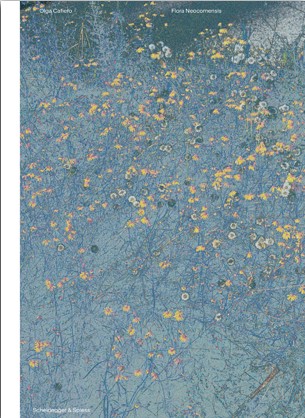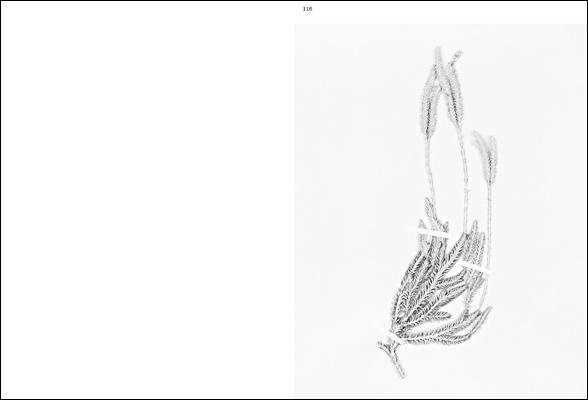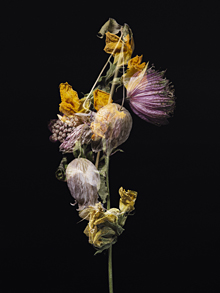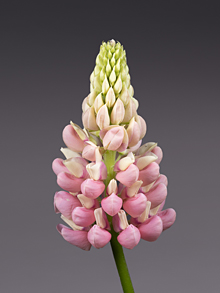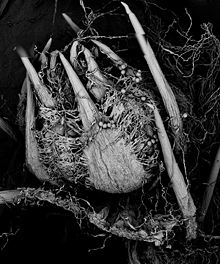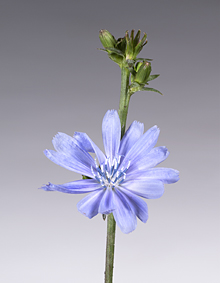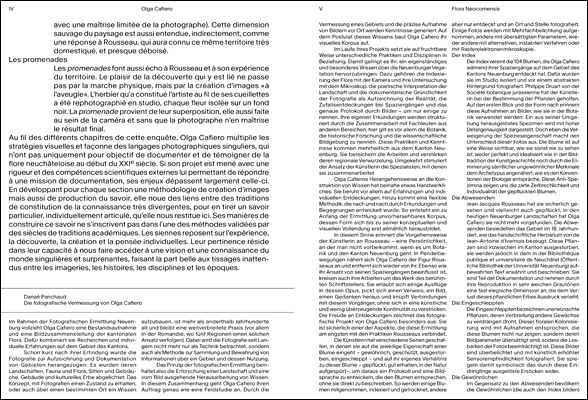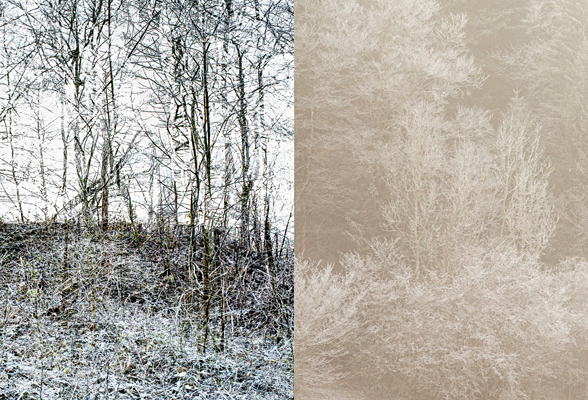Dans le cadre du projet (l’Enquête Neuchâteloise), qui m’a été décerné par le canton de Neuchâtel, je propose un recensement et une présentation de la flore du canton dans un contexte historique fort, allant et venant avec le passé. J’erre depuis près d’un an dans la région neuchâteloise avec mon appareil photo à la recherche de ses fleurs. J’ai déterré plus de 160 spécimens sur les 2300 recensés. Le statut de ces fleurs – considérées communes, protégées, envahissantes ou même éteintes – a guidé mon approche visuelle et m’a conduit à développer sept séries photographiques dans lesquelles j’ai réuni plusieurs disciplines et leurs différentes perspectives sur la nature à un carrefour fertile. La botanique, l’imagerie scientifique et l’histoire ont éclairé mon approche et nourri mes explorations autant que la prospection de mes propres promenades. Le résultat est un corpus singulier, aux facettes multiples et inattendues, aussi rigoureux dans son inventaire et l’identification des espèces végétales qu’il est poétique et complexe dans ses langages visuels ; textes de Thierry Béguin, Pierre-Emmanuel Du Pasquier, Timothée Léchot et Danaé Panchaud, photos en couleurs.
Within the frame of the project (the Enquête Neuchâteloise) I was awarded by the Canton of Neuchâtel, I propose a census and an image presentation of the flora of the canton setting them within a strong historical context, going back and forth with the past. I have been wandering for almost one year in the Neuchâtel area with my camera in search of its flowers. I have unearthed more than 160 specimens out of the more than 2,300 currently counted. The status of these flowers – considered common, protected, invasive or even extinct – guided my visual approach and led me to develop seven photographic series in which I have brought together several disciplines and their different perspectives on nature in a fertile crossroads. Botany, scientific imagery and history have informed my approach and nourished my explorations as much as the prospecting of my own walks. The result is a singular corpus, with multiple and unexpected facets, as rigorous in its inventory and identification of plant species as it is poetic and complex in its visual languages.

